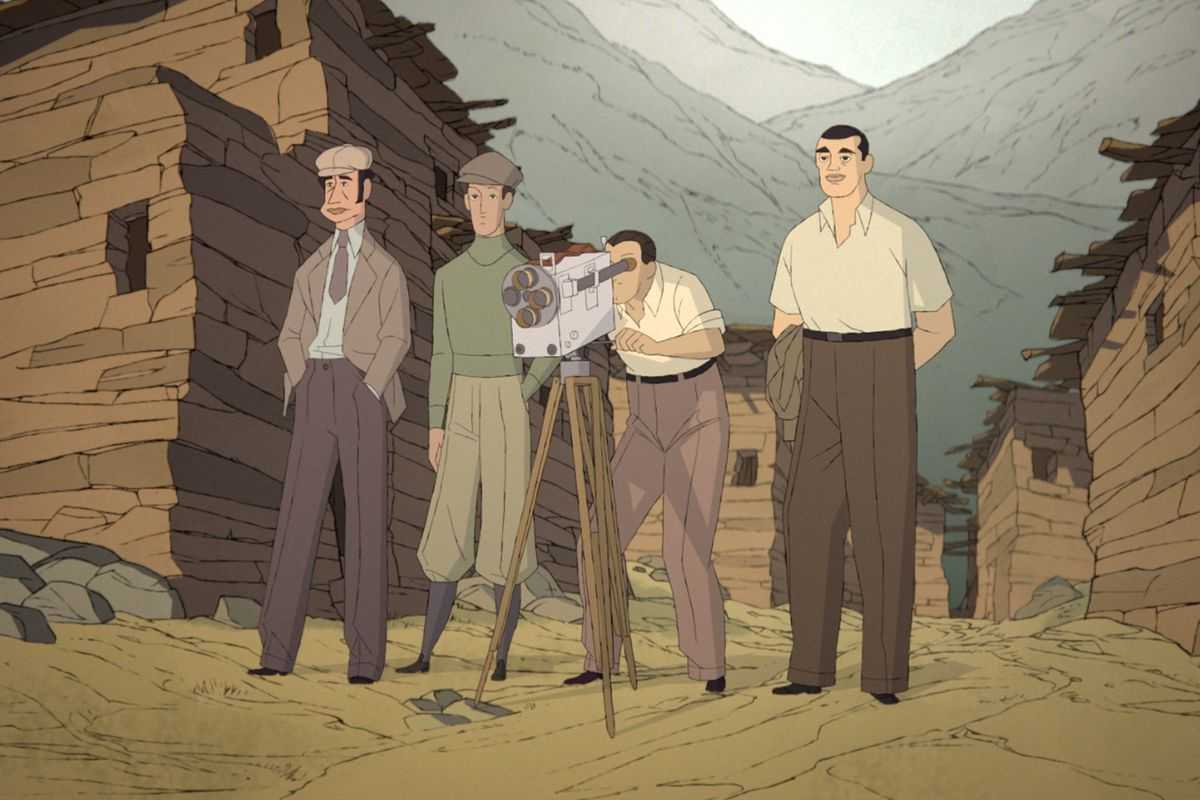Stories, too, that open up new perspectives on the work that inspired it. Too oddly-shaped for easy reissue, Las Hurdes has long since dropped out of official circulation in the UK, but a workable print can be found on YouTube, where it remains an eyeopener. Solís's scholarship positions that film as a one-off, a fluke - funded only by a lottery win, after Buñuel's previous succès de scandale L'Age d'Or had scared off the moneymen - and more sincere in its intent than has hitherto been interpreted. It's just it was intended that way by a man whose head was full of visions he could not contain, like the giant elephants we see him hallucinating marching along the boulevards of Paris, and the fleet of shimmering golden butterflies he sees gathering outside the window of his pension. This Buñuel views reality as something to be improved upon, and it's for that reason that he rounds up a small crew of co-conspirators and sets out to the Spanish hinterlands. It also makes him a gift for these animators, who find themselves with multiple layers of reality to elaborate on: the very specific terrain of Las Hurdes itself (the title refers to the shell-like appearance of the region's huddled, tin-roofed shacks as viewed from above), the various legends of this shoot (including some context for the film's altogether savage, non-PC approach to the local wildlife), and the vibrant inner life - the nightmares and fantasies - of the man at the helm.
These latter scenes - showing the restless director imagining himself being throttled by his generally distant father, or being visited at night by a Virgin Mother with the face of his own mother, or being plagued in his sleep by his "betrayer" Dalí - are where Simó's artistry comes closest to matching Buñuel's own; elsewhere, occasional inserts of Las Hurdes serve to point up just how close the animators get to the lived-in look of the people and places the original film set before the camera. Having had to sit through a joblot of computer-generated European animation in recent days, it came as something of a relief to be confronted by characters that actually have character: time and thought have evidently been expended on the craggily asymmetrical faces of this Buñuel and crew, the wisened villagers they encounter, the schoolkids who look substantially older than their age. Generally soft, sunny hues conjure up the Hurdes climate - and a wider sense of a cinematic age d'or - though Simó takes an equal care to weigh this tale's more romantic aspects against the poverty this crew noted in passing, and the knowledge of what lay ahead for Spain (and these figures in particular) as the Thirties went on. The film remains, by definition, a footnote to screen history, but in their own small way Simó and his animators have succeeded in improving on reality themselves. I hope the BFI put the original film on the DVD, to show future generations this was an extraordinary slice of reality to improve upon.
Bunuel in the Labyrinth of the Turtles is now streaming via Amazon Prime and the BFI Player.

No comments:
Post a Comment